Magic trick? No, but the results of this experiment are pretty surprising. Kids (and adults) will stare in amazement and scratch their heads wondering what causes the arrow in this experiment to change direction right before their eyes! The secret is light refraction.
Exploring light refraction couldn’t be easier or more fun, simply preview the experiment with our demonstration video below and find an easy to understand explanation of how it works below.
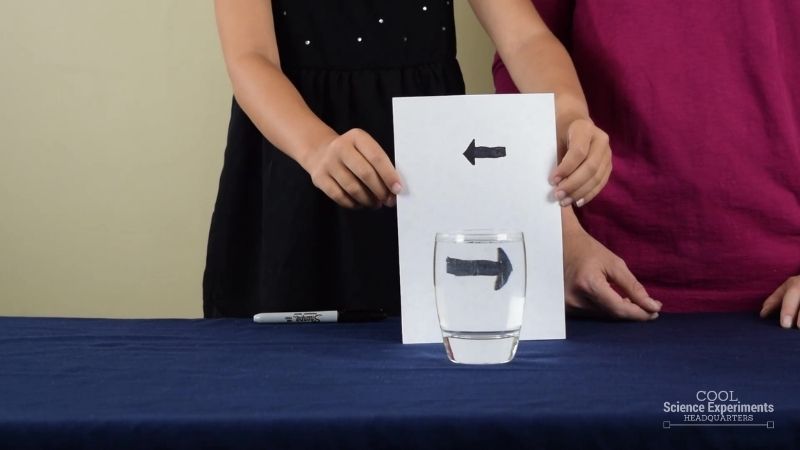
JUMP TO SECTION: Instructions | Video Tutorial | How it Works
Supplies Needed
- Piece of Paper
- Marker
- Glass
- Water
Light Refraction Science Lab Kit – Only $5
Use our easy Light Refraction Science Lab Kit to grab your students’ attention without the stress of planning!
It’s everything you need to make science easy for teachers and fun for students — using inexpensive materials you probably already have in your storage closet!
Light Refraction Science Experiment Instructions
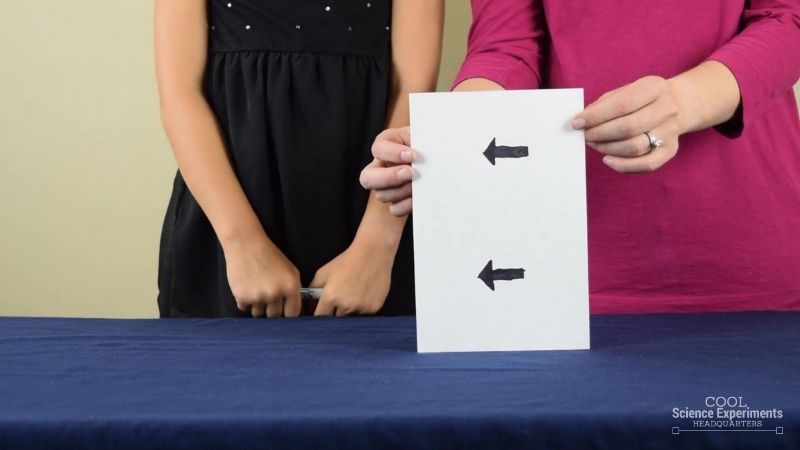
Step 1 – Get a sheet of paper and draw two arrows on it. One arrow near the top and one arrow near the bottom. Make the arrows point in the same direction.

Step 2 – Fill a glass with water.

Step 3 – Slowly lower the piece of paper behind the glass of water.

Step 4 – Look through the glass of water and watch what happens. Do you know why the arrow appears to change directions? Find out the answer in the how does this experiment work section below.
Video Tutorial
Light Refraction Science Experiment Step by Step Instructional Video
How Does the Science Experiment Work
The scientific concept that is at work in this experiment is called refraction. Refraction is the bending of light. Refraction occurs when light travels from one medium to another (ie. air to water, water to air).
During the experiment, the light traveled from the image through the air, then through the glass cup into the water, and finally out of the glass cup and into the air once more before it reached our eyes. Light refracts as it passes from one medium to the next because it travels at different speeds through those mediums. Light travels fastest through air, a little slower through water, and even slower through glass.
This means that the light bends once when it travels through the glass cup into the water, and then it bends again when it travels out of the glass cup and into the air. As a result, the light paths cross and the image appears to be flipped horizontally (left/right).
Light Refraction Examples
The following are examples of refraction that occur all around us.
- Glasses or Contacts – The lenses of glasses and contacts are designed to bend light in ways that help a persons improve vision.
- Rainbow – Rainbows are formed when the rays of sunlight bend (refract) when they travel through rain drops.
- Cameras – A camera works because the lens causes the light rays to refract.
Light Refraction Science Lab Kit – Only $5
Use our easy Light Refraction Science Lab Kit to grab your students’ attention without the stress of planning!
It’s everything you need to make science easy for teachers and fun for students — using inexpensive materials you probably already have in your storage closet!
More Experiments that Show Light Refraction
Refraction of Light Science Experiment – Watch as the straw appears to bend in this experiment that shows refraction in action.
Ruler Changes Size Science Experiment – Observe how the size of an object changed when viewed through different liquids.
I hope you enjoyed the experiment. Here are some printable instructions:
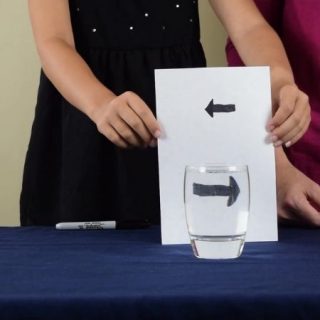
Light Refraction Science Experiment
Materials
- Piece of Paper
- Marker
- Glass
- Water
Instructions
- Get a sheet of paper, and draw two arrows on it. One arrow near the top and one arrow near the bottom. Make the arrows point in the same direction.
- Fill a glass with water.
- Slowly lower the piece of paper behind the glass of water.
- Look through the glass of water and watch what happens.
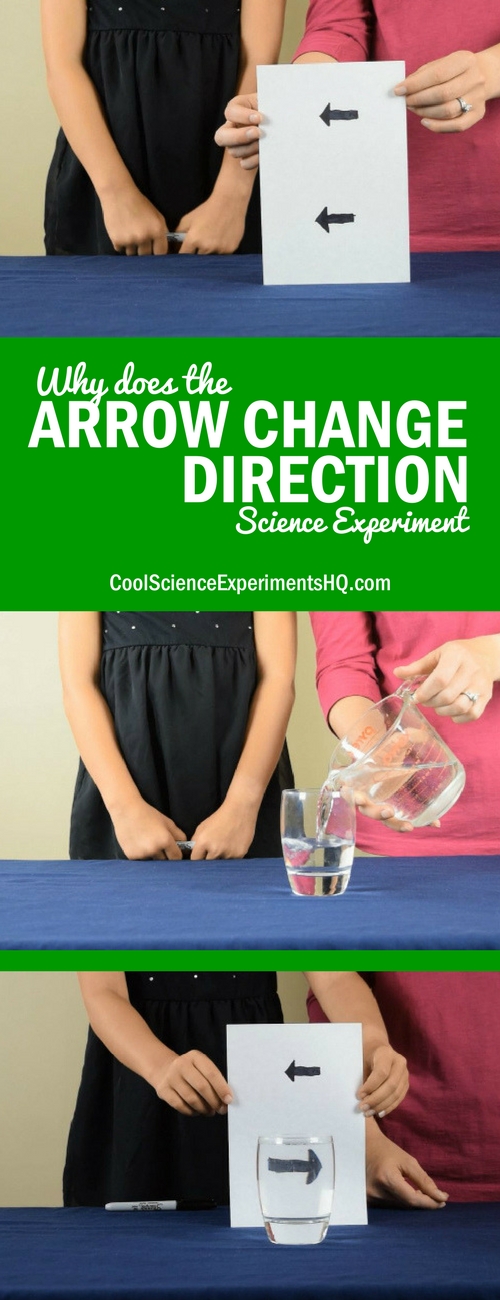
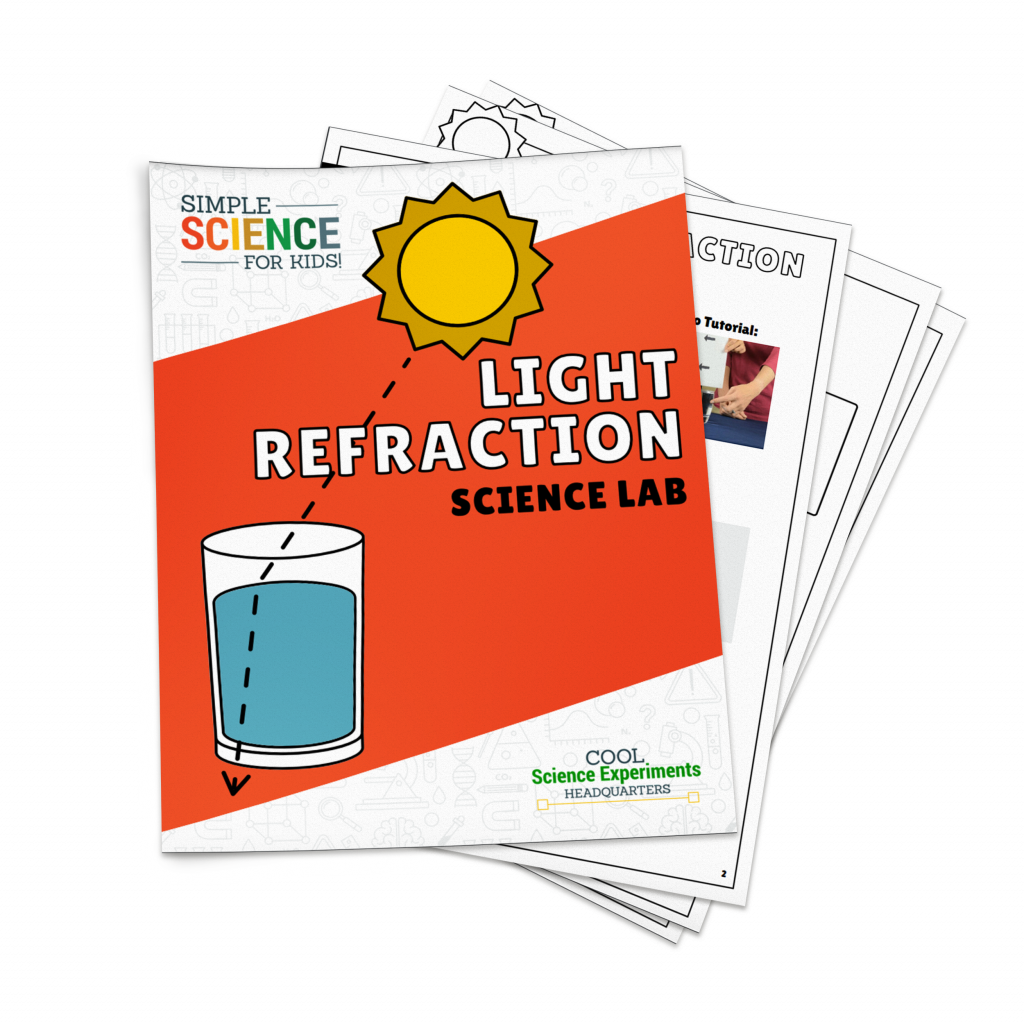

THIS IS COOL. MY DAUGHTER WON THE SCHOOL WIDE SCIENCE PROJECT. THANK YOU SO MUCH FOR DOING THIS EXPERIMENT!
Cause of the reflection of the water.
*refraction
I can’t get this to work. I have used a round glass and a square plastic container. I’ve moved the piece of paper close to the container of water and father back. I have lowered the paper quickly and very slowly.
Clearly it works, so what am I missing? The size of the arrows? The size of the paper?
Help! I teach a science class to elementary school children and would love to do this. Please answer MaryleeST@gmail.com
This is because of refraction
Wonderful. Thanks for sharing
It was very useful and unique. It impressed my teacher a lot.
I was finally able to get the arrow to change direction, but it appears that the mechanism is not the water, but the shape of the glass.
It did not work with a square or wide straight sided glass.
It did work in a straight sided narrow glass, but the arrow was distorted and could be manipulated back and forth by moving the paper.
Wow, this helped me for my school project i won second place thank you so much
I tried this in a square glass container and the arrow does not change direction.
Does the concave/convex shape of the glass have something to do with the result?
That’s a great question. Do you have multiple glass containers to try the experiment with? That way you can test to see if the shape of the contain changes the results of the experiment. If you try it, come back to let us know what you find.
It was refraction that caused the change of direction
It is caused by the refraction or the shape of the glass.
Thnx, I got 3rd position in my competition! 🤤